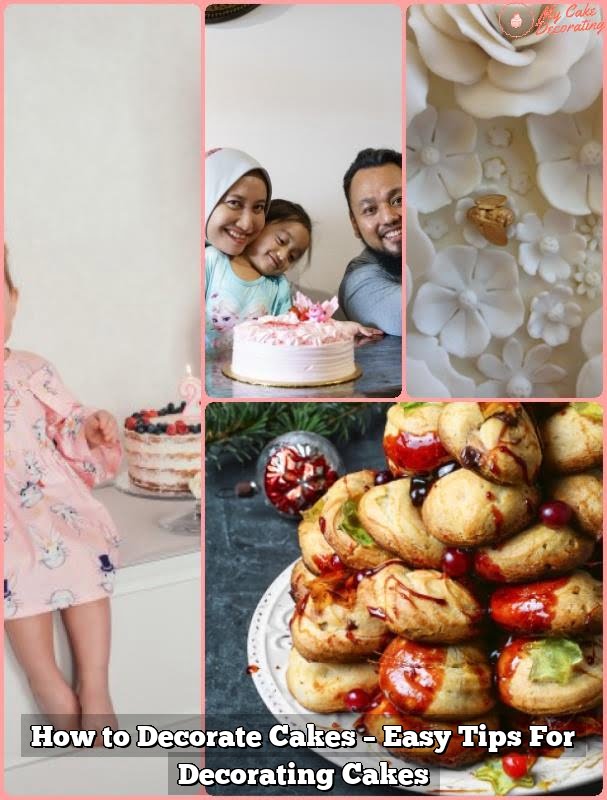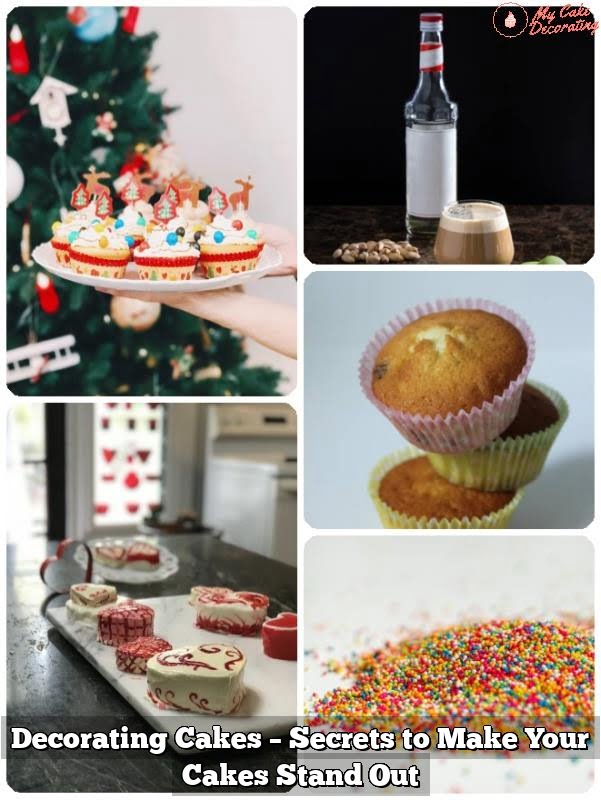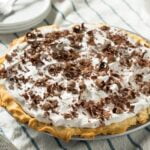What do bakers use to decorate cakes? The art of cake decorating goes beyond just creating delicious and moist cakes. It involves the use of various techniques, tools, and materials to make beautiful and visually stunning creations that are not only delightful to the palate but also pleasing to the eyes. In this article, we will delve into the world of cake decoration, exploring the different methods and materials that bakers use to adorn their delectable creations.
Cake decorating is a form of edible art that requires skill, creativity, and precision. From simple birthday cakes to elaborate wedding cakes, bakers have a wide array of options when it comes to decorating their masterpieces. Understanding the different types of frosting and icing used by bakers is essential in achieving the desired look for a cake. In addition to frosting and icing, there are also other essential tools and equipment that play a crucial role in cake decoration.
In this section, we will take a closer look at the various types of frosting and icing used by bakers, as well as explore the essential tools and equipment needed for cake decoration. Whether you are a professional baker or someone who enjoys baking at home, understanding these basics is key to creating beautifully decorated cakes. So let’s embark on this sweet journey into the art of cake decorating.
Types of Frosting and Icing Used by Bakers
When it comes to decorating cakes, the type of frosting and icing used can make a big difference in the final appearance and taste of the cake. Bakers have a variety of options to choose from, each with its own unique characteristics and purposes. From buttercream to royal icing, here are some of the most popular types of frosting and icing used by bakers.
Buttercream
One of the most versatile and commonly used frostings for cake decoration is buttercream. This creamy, smooth frosting can be easily flavored and colored to create various designs on cakes. Its soft texture makes it perfect for creating piped borders, flowers, and intricate patterns on cakes.
Fondant
Fondant is a smooth, pliable icing that can be rolled out and draped over cakes to create a flawless finish. It is often used for wedding cakes and special occasion cakes due to its elegant look. Fondant can also be molded into 3D decorations such as flowers, figures, or other shapes, making it a favorite among bakers for elaborate designs.
Royal Icing
Royal icing is a hard-drying icing made from egg whites or meringue powder mixed with powdered sugar. It is commonly used for intricate detailing on cakes such as lace patterns, delicate piping work, and creating edible decorations like flowers or letters. Its quick drying properties make it ideal for creating fine details that hold their shape well.
In addition to these popular types of frosting and icing, bakers may also use ganache, cream cheese frosting, or whipped cream frosting to achieve different decorative effects on their cakes. The choice of frosting or icing depends on the desired look, flavor, and texture of the finished cake. Ultimately, what do bakers use to decorate cakes plays an essential role in achieving stunning results that delight both the eyes and taste buds alike.
Essential Tools and Equipment for Cake Decoration
When it comes to creating beautifully decorated cakes, bakers rely on a variety of tools and equipment to bring their creative visions to life. Whether working with fondant, buttercream, or royal icing, having the right tools at hand can make all the difference in achieving professional-looking results. Here are some essential items that bakers use for cake decoration:
- Piping bags and tips: These are crucial for creating intricate designs with frosting or icing. Different tips allow for various designs, from intricate lace patterns to elegant rosettes.
- Offset spatula: This tool is instrumental in spreading and smoothing frosting or icing over the cake’s surface, ensuring a flawless finish.
- Bench scraper: Used for creating smooth sides and sharp edges on frosted cakes, a bench scraper is an indispensable tool for achieving professional-looking results.
- Fondant smoother: For cakes covered in fondant, a fondant smoother helps eliminate air bubbles and ensures a smooth, polished finish.
In addition to these basics, bakers also rely on specialized equipment such as turntables for easy cake rotation while decorating, as well as parchment paper for creating delicate decorations such as royal icing flowers. Investing in quality tools can significantly impact the overall look and feel of decorated cakes.
Aspiring cake decorators should also consider investing in specialty tools such as sculpting tools for shaping fondant or gum paste, and edible ink pens for adding intricate details to their creations. These items can open up new creative possibilities when it comes to cake decoration.
Edible Decorations
When it comes to decorating cakes, bakers have a wide range of options to create beautiful and delicious designs. One of the most popular choices for edible decorations is fondant. Fondant is a versatile sugar paste that can be rolled out and draped over cakes to create a smooth, polished look. It can also be shaped into intricate figures, flowers, and other designs to add stunning visual appeal to any cake.
Using Edible Flowers
Another beautiful option for edible cake decorations is the use of edible flowers. These delicate blooms can add a touch of elegance and natural beauty to any cake design. From fresh flower petals to crystallized or dried edible flowers, bakers can use these floral elements to enhance the aesthetic appeal of their creations.
Working With Modeling Chocolate
In addition to fondant and edible flowers, bakers often use modeling chocolate as an edible decoration for cakes. This pliable confection can be shaped and molded into various designs, making it a versatile choice for creating custom cake decorations. Whether sculpting figurines or crafting intricate details, modeling chocolate offers endless possibilities for creative cake decorating.
With the variety of edible decorations available to bakers, from fondant and modeling chocolate to edible flowers, the art of cake decorating opens up exciting opportunities for creativity and expression in the world of baking.
Non-Edible Decorations
When it comes to decorating cakes, bakers have an array of non-edible items at their disposal to add that special touch to their creations. From ribbons to cake toppers, these elements can elevate a cake’s design and make it truly stand out. Here are some examples of non-edible decorations commonly used by bakers:
- Ribbons: Ribbons are a versatile and elegant addition to cake decoration. Whether it’s satin, organza, or lace, ribbons can be used to create beautiful borders, bows, or even wrap around tiers for a sophisticated look.
- Cake toppers: Cake toppers come in various forms, such as figurines, floral arrangements, or themed decorations to suit any occasion. Whether it’s a wedding cake topped with a miniature bride and groom or a birthday cake adorned with festive figurines, these decorative elements add a personal touch to the cake.
- Non-edible elements: Some bakers get creative by incorporating non-edible elements like fresh flowers, feathers, or even jewels into their cake designs. While these items are not meant for consumption, they can create stunning visual effects and add a unique flair to the overall presentation of the cake.
In the world of professional cake decorating, these non-edible decorations open up endless possibilities for creativity and customization. Bakers are able to tailor each design according to their clients’ preferences and bring their visions to life using these decorative elements.
From elegant ribbons that accentuate the layers of a wedding cake to whimsical cake toppers that reflect the theme of a child’s birthday party, non-edible decorations play an essential role in enhancing the aesthetic appeal of cakes. Ultimately, these decorative elements allow bakers to go beyond traditional frosting and icing techniques and truly showcase their artistic capabilities in the realm of cake decoration.
Specialized Techniques for Professional Cake Decorating
When it comes to professional cake decorating, bakers often use specialized techniques to create stunning and intricate designs on their cakes. One common technique is the use of piping bags and tips to create different shapes, patterns, and textures with frosting or icing. Bakers can use a variety of piping tips, such as round, star, or petal tips, to achieve different effects on their cakes. This allows them to add delicate details or create intricate designs with ease.
Another specialized technique used by professional bakers is the art of sugar sculpting. This involves using a special type of sugar paste, known as fondant or gum paste, to create detailed decorations such as flowers, figurines, and other ornate elements. Bakers can mold and shape the sugar paste into various forms to add a touch of elegance and sophistication to their cakes. Sugar sculpting requires precision and skill, making it a hallmark of professional cake decorating.
Professional bakers also often utilize airbrushing techniques to add color and dimension to their cake designs. Airbrushing allows for smooth gradients and vibrant colors that can enhance the overall look of the cake. With the use of stencils and masking techniques, bakers can create intricate designs and patterns on their cakes that are both eye-catching and visually appealing.
Trends in Cake Decorating
Over the years, the art of cake decorating has seen a dramatic evolution, with new trends constantly emerging. One of the most popular trends in recent years is the drip cake, which involves using a ganache or icing to create a dripping effect down the sides of the cake.
This trend adds a modern and playful touch to traditional cakes, giving them a unique and eye-catching appearance. Drip cakes can be customized with different colors and flavors, making them perfect for any occasion.
Another trend that has gained popularity is watercolor cakes. This technique involves blending different shades of frosting or edible paint to create a beautiful, watercolor-inspired design on the surface of the cake. The result is a stunning and ethereal look that is perfect for weddings and other special events. Bakers use various painting tools such as brushes and sponges to achieve the desired watercolor effect, showcasing their artistic abilities in cake decorating.
As these trends continue to captivate cake lovers around the world, bakers are constantly exploring new techniques and materials to push the boundaries of traditional cake decoration. With an endless array of possibilities, from drip cakes to watercolor designs, it’s no wonder that cake decorating remains an exciting and ever-changing art form.
Bakers have successfully used innovative techniques and materials to bring these trendy designs to life, showing how versatile and creative they can be when it comes to decorating cakes. Whether using drip effects or creating intricate watercolor designs, bakers continue to push the boundaries of what is possible in cake decoration while always keeping taste as top priority.
Tips and Tricks for Beginners
Starting to decorate cakes at home can be a fun and rewarding experience for beginners. Whether you’re looking to create beautiful birthday cakes for loved ones or simply want to explore your creativity, learning the basics of cake decorating is a great place to start.
One of the first things beginners should consider is the type of frosting or icing they want to use. The most common options include buttercream, fondant, royal icing, and ganache. Each has its own unique qualities and is used for different purposes in cake decorating.
In addition to choosing the right frosting or icing, having essential tools and equipment is important for successful cake decoration at home. Basic tools such as piping bags, tips, offset spatulas, turntables, and a bench scraper are crucial for achieving professional-looking results.
Another key consideration for beginners is edible decorations. Fondant, gum paste, and edible flowers are popular choices for adding decorative elements to cakes. These items can be molded into various shapes and designs to enhance the overall look of the cake.
| Types of Frosting/Icing | Buttercream, Fondant, Royal Icing, Ganache |
|---|---|
| Essential Tools | Piping bags, tips, offset spatulas, turntables |
| Edible Decorations | Fondant, Gum Paste, Edible Flowers |
Conclusion
In conclusion, the art of cake decoration offers endless opportunities for creativity and expression. Bakers use a variety of techniques and tools to create beautifully decorated cakes that not only look stunning but also taste delicious. From using various types of frosting and icing to incorporating edible and non-edible decorations, there are countless ways to elevate the visual appeal of a cake.
One of the most fascinating aspects of cake decoration is the use of specialized techniques by professional bakers. Whether it’s creating intricate designs with piping or mastering the art of sculpting fondant, these techniques require skill and precision. Additionally, staying updated on the latest trends in cake decorating-such as drip cakes and watercolor cakes-allows bakers to continually experiment and push the boundaries of their creativity.
For beginners looking to start decorating cakes at home, there is a wealth of tips and tricks to learn from experienced bakers. Understanding the essential tools and equipment needed, as well as practicing different frosting techniques, can help aspiring decorators build their skills. Ultimately, what do bakers use to decorate cakes? The answer is imagination, innovation, and a passion for creating visually stunning confections that bring joy to those who indulge in them.
Frequently Asked Questions
What Can You Use to Decorate a Cake?
There are a variety of items that can be used to decorate a cake, including frosting, icing, fondant, edible flowers, sprinkles, and decorative toppers. These items can add color, texture, and creativity to the cake.
What Supplies Are Used to Decorate a Cake?
Cake decorating supplies commonly include piping bags and tips for applying frosting or icing in different designs, spatulas for spreading frosting smoothly, edible glitters and dusts for adding shimmer and shine, and molds for creating intricate shapes out of fondant or gum paste.
What Do Cake Decorators Use?
Cake decorators use their creativity and skill along with tools such as pastry brushes for applying edible glue or syrup to cakes, stencils for creating patterns on the surface of the cake, edible markers for writing messages or drawing designs directly onto the cake, and various types of cutters for shaping fondant or gum paste into specific shapes.
Their expertise brings together these tools to create beautiful and delicious works of art.

Welcome to my blog about home and family. This blog is a place where I will share my thoughts, ideas, and experiences related to these important topics. I am a stay-at-home mom with two young children. I hope you enjoy reading it! and may find some helpful tips and ideas that will make your home and family life even better!





